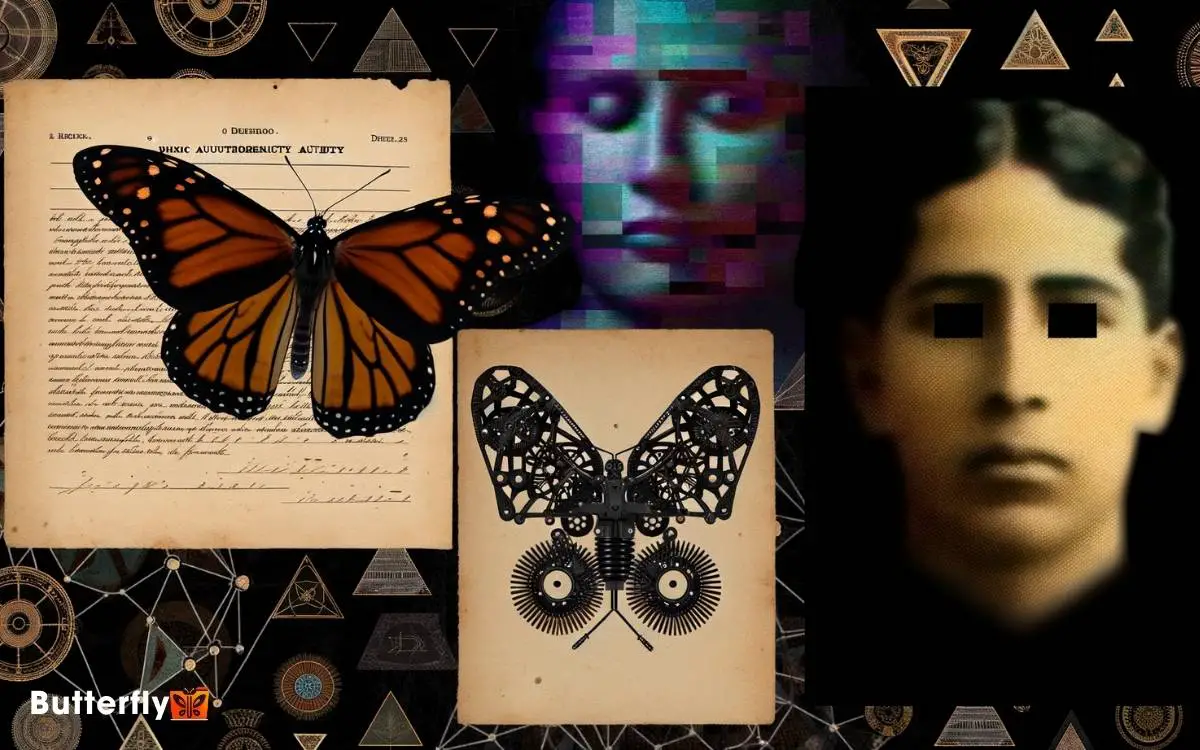Mk Ultra Project Monarch Butterfly: Explore the Controversy!
MK Ultra was a covert CIA project launched in 1953, aimed at developing mind control techniques through methods like drug experimentation, hypnosis, and sensory deprivation. It involved key figures such as Dr. Sidney Gottlieb and Allen Dulles.
Project Monarch Butterfly is an alleged subproject, not officially documented, centered on trauma-based mind control, creating dissociative states, and purportedly exploiting victims.
Declassified documents reveal significant ethical violations and long-term psychological effects on subjects. While some claims border on conspiracy theories, separating documented facts from speculation is essential.
To uncover the depth of these claims and their lasting impacts, you should learn more.

Key Takeaways
Origins of MK Ultra
Born out of the intense paranoia and espionage of the Cold War era, the MK Ultra program was initiated by the CIA in 1953 to explore mind control techniques.
You’ll find that this covert operation was a direct response to fears of Soviet and Chinese brainwashing.
The agency covertly funded universities, hospitals, and research centers to study various methods of manipulating mental states and altering brain function.
Through meticulous documentation, you’ll see that the program involved experiments with drugs like LSD, hypnosis, and sensory deprivation.
The origins of MK Ultra reflect a period where scientific boundaries were pushed in the name of national security. Understanding this context helps you grasp why such extreme measures were considered justifiable at the time.
Goals and Objectives
The primary goals and objectives of the MK Ultra program, meticulously documented in declassified files, were to develop techniques for mind control and psychological manipulation for use in espionage and national security.
You’ll find that researchers aimed to explore a variety of methods, including the use of drugs, hypnosis, sensory deprivation, and other forms of psychological torture.
They wanted to create a reliable means to extract information from unwilling subjects and to implant false memories or erase existing ones.
Additionally, the program sought to enhance the performance and resistance of operatives under stress.
The overarching objective was to gain a strategic advantage over adversaries during the Cold War era. This pursuit involved both ethical and unethical experimentation on human subjects.
Key Figures Involved
Among the architects of the MK Ultra program, Dr. Sidney Gottlieb stands out as a pivotal figure who orchestrated many of the project’s clandestine experiments.
His involvement included overseeing drug trials, mind control techniques, and unethical human testing. Gottlieb worked closely with other significant individuals who played key roles in the project.
- Allen Dulles: As the CIA Director, he authorized the MK Ultra program and provided strategic direction.
- Richard Helms: Deputy Director of Plans, he guaranteed the program’s secrecy and operational support.
- Dr. Ewen Cameron: Conducted controversial psychiatric experiments under MK Ultra’s umbrella.
- Frank Olson: A CIA scientist whose mysterious death highlighted the project’s darker aspects.
- George Hunter White: Operative who conducted field tests involving LSD and other substances.
These figures shaped the project’s trajectory and legacy.
Techniques and Methods
In exploring the techniques and methods employed in the MK Ultra Project Monarch Butterfly, you’ll find a disturbing array of psychological manipulation, drug experimentation, and sensory deprivation tactics designed to control and alter human behavior.
Researchers used various methods, including administering hallucinogenic drugs like LSD to subjects without their consent. They subjected individuals to prolonged isolation and sensory deprivation to break down their mental state.
Techniques also included the use of electroshock therapy and the creation of trauma through physical and emotional abuse.
These methods aimed to fragment the mind, making it more susceptible to control and suggestion. Detailed documentation reveals a systematic approach to manipulating the human psyche, raising ethical and moral concerns about these practices.
Hypnosis and Mind Control
You’ll explore the techniques and methods utilized in hypnosis and mind control under Project Monarch, including psychological manipulation tactics.
Detailed documentation reveals how these practices raised significant ethical and moral implications.
An objective analysis of these aspects will help you understand the broader impacts of such experiments.
Techniques and Methods Utilized
The MK Ultra Project Monarch Butterfly employed a variety of sophisticated techniques, including hypnosis and mind control, to manipulate and reprogram individuals’ thoughts and behaviors.
These methods were meticulously designed to break down mental barriers and implant new patterns of thinking.
To comprehend their approach, you need to take into account the following:
- Hypnosis: Used to induce a trance state, making subjects highly suggestible.
- Drug Administration: Administering substances like LSD to alter perception and weaken resistance.
- Sensory Deprivation: Isolating individuals to create disorientation and increase vulnerability.
- Behavioral Conditioning: Utilizing rewards and punishments to reinforce desired behaviors.
- Electroshock Therapy: Applying controlled electric shocks to disrupt memory and cognition.
These techniques collectively aimed to create a malleable psychological state, facilitating control over the subjects.
Psychological Manipulation Tactics
Hypnosis and mind control, central to the psychological manipulation tactics of the MK Ultra Project Monarch Butterfly, were employed to systematically erode personal autonomy and implant new directives within the psyche.
These methods involved deep trance states induced through hypnosis, making subjects highly suggestible. You’d see tactics like repetitive messaging and controlled sensory environments, which aimed to break down existing mental barriers.
Detailed documentation reveals that operatives used a combination of drugs and psychological techniques to manipulate thought patterns and behavior. They meticulously recorded responses and adjusted their methods to guarantee compliance.
Research indicates the process was designed to create dissociative states, allowing new identities or instructions to be embedded without the subject’s conscious awareness.
Ethical and Moral Implications
Considering the profound impact on individual autonomy and consent, the ethical and moral implications of employing hypnosis and mind control in the MK Ultra Project Monarch Butterfly demand thorough scrutiny.
You need to understand how these practices challenge the very essence of human rights and personal freedom. The clandestine nature of the project raises significant concerns about transparency and accountability.
- Violation of Informed Consent: Subjects were often unaware and uninformed.
- Psychological Harm: Potential for long-term mental health issues.
- Manipulation of Free Will: Erosion of personal autonomy.
- Lack of Oversight: Absence of ethical review and regulatory frameworks.
- Human Rights Violations: Breaches of fundamental human dignity.
Your detailed analysis of these points will highlight the grave ethical breaches inherent in such covert operations.
Drugs and Psychedelics
Many researchers have documented how drugs and psychedelics were systematically employed in the Mk Ultra Project Monarch Butterfly to manipulate and control subjects’ minds.
You’ll find that substances like LSD, mescaline, and other hallucinogens were administered to disorient and break down individuals’ mental defenses.
Detailed reports show that these drugs aimed to induce altered states of consciousness, making subjects more susceptible to suggestion and programming.
By meticulously recording dosages and effects, researchers sought to refine their methods for maximum psychological impact.
The objective analysis of these experiments reveals a chilling use of pharmacological agents to erode personal autonomy.
Understanding this aspect is essential to grasp the full scope of the project’s manipulative tactics and its ethical ramifications.
Trauma-Based Programming
While drugs and psychedelics were pivotal in breaking down mental defenses, trauma-based programming aimed to fracture the psyche through extreme physical and emotional abuse.
This method involved calculated brutality to induce dissociation and create multiple, controllable personalities.
Researchers meticulously documented the effects of:
- Sensory Deprivation: Isolating individuals to disorient and break them.
- Physical Torture: Inflicting pain to push the mind beyond its limits.
- Sexual Abuse: Using humiliation to destabilize psychological barriers.
- Sleep Deprivation: Exhausting the body to impair cognitive function.
- Psychological Manipulation: Employing relentless threats and gaslighting.
Alleged Victims’ Testimonies
You’ll find that the testimonies of alleged victims provide important insights into their experiences with trauma and recovery.
These survivor stories often detail the psychological and physical abuse they endured, creating a detailed picture of the program’s alleged impact.
Survivor Stories
Survivor stories, often recounting harrowing experiences and deeply traumatic events, provide an essential window into understanding the alleged human rights abuses within the Mk Ultra Project Monarch Butterfly.
You’ll find that these testimonies aren’t just narratives but critical pieces of evidence that demand our attention and scrutiny. Each story sheds light on different aspects of the project, from psychological manipulation to physical torment.
- Detailed accounts of psychological manipulation
- Descriptions of physical and emotional abuse
- Personal reflections on the long-term impact
- Allegations of systematic control and exploitation
- Calls for justice and acknowledgment from authorities
Trauma and Recovery
In examining the long-term impact of the Mk Ultra Project Monarch Butterfly, alleged victims’ testimonies reveal profound trauma and intricate recovery journeys that underscore the need for thorough understanding and support.
You’ll find accounts detailing severe psychological and physical abuse, often leading to dissociation and long-lasting mental health issues.
Recovery for these individuals typically involves extensive therapy, often focusing on trauma-informed care and PTSD treatment.
Documented cases highlight the importance of creating safe environments where survivors can process their experiences without judgment. Peer support networks also play an important role, providing shared understanding and connection.
For a holistic understanding, it’s vital to take into account both the diverse symptoms manifested and the multifaceted approaches necessary for effective recovery.
Declassified Documents
Declassified documents reveal the intricate details and methodologies employed in the controversial MK Ultra Project Monarch Butterfly, shedding light on the extent of governmental experimentation.
You’ll find that these records provide a window into the scale and depth of the project. Key revelations include:
- Mind Control Techniques: Various psychological methods and drugs aimed at influencing and controlling human behavior.
- Participant Selection: Criteria and processes for choosing subjects, often without their consent.
- Ethical Violations: Breaches of ethical standards, including lack of informed consent and psychological manipulation.
- Methodological Approaches: Detailed accounts of the procedures and practices used in experiments.
- Funding and Oversight: Documentation of government agencies involved and financial backing.
These documents offer a sobering look at the ethical implications and extensive reach of such clandestine activities.
Conspiracy Theories
Many conspiracy theories surrounding the MK Ultra Project Monarch Butterfly speculate about hidden agendas and covert operations that extend far beyond the officially declassified documents.
Researchers and theorists often claim that the project involved mind control techniques used on unwitting subjects, suggesting a broader scope of unethical experimentation.
You’ll find allegations that it aimed to create sleeper agents or manipulate influential figures. There’s also talk about psychological warfare applications.
Analysis of available evidence shows a mix of fact and speculation. While some declassified documents confirm unethical practices, they don’t provide a detailed picture, leaving room for theories to flourish.
Objective research requires separating documented facts from conjecture, ensuring a balanced understanding of this controversial topic.
Long-Term Effects
Understanding the long-term effects of the MK Ultra Project Monarch Butterfly requires examining both documented cases and anecdotal reports from alleged victims. You’ll find that these effects can manifest as severe psychological and physiological issues.
Many victims report experiencing post-traumatic stress disorder (PTSD), dissociative identity disorder (DID), and chronic anxiety. Physical symptoms such as migraines and sleep disturbances are also common.
It’s crucial to analyze these findings with an objective lens to understand the full scope of the project’s impact.
- PTSD: Prolonged exposure to trauma has led to chronic stress.
- DID: Reports indicate multiple personality disorders.
- Chronic Anxiety: Persistent anxiety affecting daily life.
- Migraines: Frequent, intense headaches.
- Sleep Disturbances: Chronic insomnia and nightmares.
This detailed overview highlights the severe long-term effects reported by alleged victims.
Ethical Implications
In addition, the ethical implications of the MK Ultra Project Monarch Butterfly are extensive, prompting significant debate within both academic and public spheres.
You’ll find that the project’s use of uninformed human subjects raises serious concerns about consent and autonomy.
Detailed documentation reveals that participants were often unaware of their involvement, violating fundamental ethical principles.
Objective analysis also highlights the long-term psychological harm inflicted on subjects, challenging the moral justifications of the research.
Moreover, the secrecy surrounding the project obstructs accountability and transparency, eroding public trust in scientific and governmental institutions.
By examining these factors, you can better understand the profound ethical breaches and their lasting impact on society.
The debate continues to influence contemporary discussions on research ethics.
Conclusion
In examining Project MK Ultra and its Monarch butterfly subproject, you uncover startling details. Particularly, over 80 institutions, including universities and hospitals, were unwittingly involved. This breadth exemplifies the vast reach and ethical breaches of the program.
As you investigate declassified documents and analyze long-term effects, you see a dark chapter in history that raises essential questions about government transparency and ethical research.
Your exploration underscores the urgent need for rigorous ethical standards in scientific inquiry.






